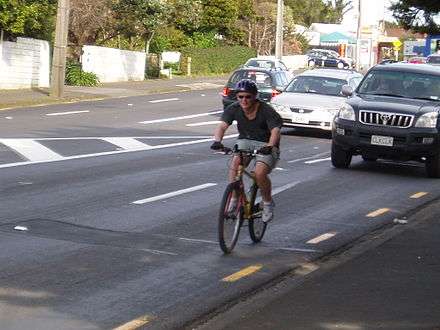Bicycle transportation planning and engineering



Bicycle transportation planning and engineering are the disciplines related to transportation engineering and transportation planning concerning bicycles as a mode of transport and the concomitant study, design and implementation of cycling infrastructure. It includes the study and design of dedicated transport facilities for cyclists (e.g. cyclist-only paths) as well as mixed-mode environments (i.e. where cyclists share roads and paths with vehicular and foot traffic) and how both of these examples can be made to work safely.[1] In jurisdictions such as the United States it is often practiced in conjunction with planning for pedestrians as a part of active transportation planning.[2]
Some examples of the types of bikeways under the purview of bicycle transportation engineers include partially segregated infrastructure in-road such as bike lanes, buffered bike lanes; physically segregated in-road such as cycle tracks; bike paths with their own right-of-way; and shared facilities such as bicycle boulevards, shared lane markings, advisory bike lane, road shoulders, wide outside lanes, shared street schemes, and any roadways with legal access for cycling.
Bicycle transportation engineers also are involved in improving intersections/junctions and traffic lights; improving the road surface; building bicycle parking such as bicycle locks, bicycle stands, lockers.
See also
References
- ↑ "Association of Pedestrian and Bicycle Professionals". Retrieved 20 July 2015.
- ↑ "Active Transportation". Federal Administration Department. Retrieved 18 August 2015.